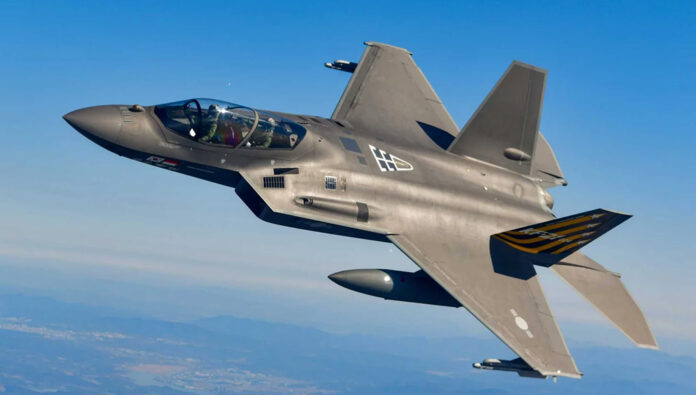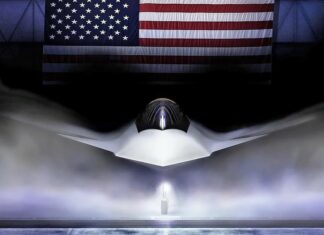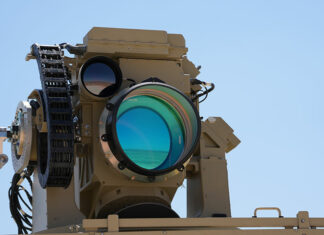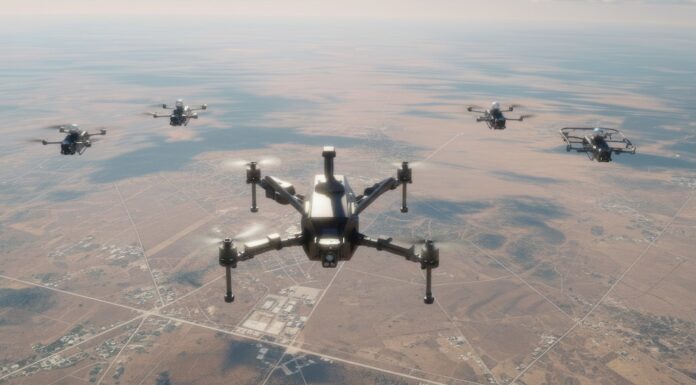This article is part of our weekly DefenseTech Brief.
While major powers like the USA, Europe, and China push forward with 6th-generation fighter concepts, significant global interest and procurement activity remain focused on advanced 4th-, 4.5-, and 5th-generation platforms. Nations balance sophisticated capability requirements against acquisition costs, operational sustainment, and industrial participation goals. Recent developments show notable competition, particularly in Latin America and the Indo-Pacific, involving both established platforms and emerging contenders.
Indonesia – Joining the Turkish KAAN Program?
Indonesia is exploring participation in Türkiye’s fifth-generation fighter program, known as KAAN (formerly TF-X). During a visit to Ankara, Indonesian President Joko Widodo, also known as Prabowo Subianto, expressed formal interest in joining the program, reflecting Indonesia’s goals to modernize its diverse and aging air fleet and diversify its international defense partnerships beyond traditional suppliers. The KAAN, developed by Turkish Aerospace Industries (TAI) with technical support from BAE Systems, features advanced stealth characteristics, supercruise capability (Mach 1.8), integrated AI, and significant payload capacity. Following its maiden flight in February 2024 and a second test flight in May 2024, TAI targets initial operational deliveries to the Turkish Air Force between 2028 and 2029. Indonesia’s interest represents a significant potential export opportunity for Türkiye’s ambitious program, although financial and technical integration challenges remain.
Table 1: Recent Fighter Jet Negotiations/Selections (as of April 2025)
| Country | Aircraft Considered/Selected | Status | Potential Quantity | Notes |
|---|---|---|---|---|
| Indonesia | KAAN (Türkiye) | Expressed Interest / Partnership Talks | Unspecified | Seeking 5th-gen capability, diversifying partners |
| Peru | Gripen E/F (Sweden), F-16V (US), Rafale F4 (France) | Shortlisted / Swedish G2G Proposed | Up to 12 (initial), 24 (total) | Replacing MiG-29/Mirage 2000; Swedish proposal includes Air Defense systems |
| Colombia | Gripen E/F (Sweden) | Selected (LoI Signed) | Unspecified (Est. 15-24 total) | Replacing Kfirs; potential US engine veto concern (denied by Saab); offsets included |
| Portugal | Gripen C/D/E (Sweden), F-35A (US), Rafale (France), Typhoon (Europe) | Reconsidering F-35 / Gripen Talks Ongoing | Unspecified | Replacing F-16s; exploring European options due to US policy concerns |
| Philippines | F-16 (US), KF-21 (South Korea) | F-16 Sale Approved / KF-21 Shortlisted & Offered | 20 (F-16), ~10 (KF-21 initial offer) | MRF Project ongoing; F-16 approved via $5.6B package; KAI offered 10 KF-21 Block 1 for ~$1.1B budget |
| Uzbekistan | JF-17 Blk III (China/Pak), J-10C (China), J-35 (China) | Reportedly Considering / Sale Authorized (Unconfirmed) | Unspecified | Replacing Su-27/MiG-29; seeking cost-effective options; pilot training reported |
| Azerbaijan | JF-17C Blk III (China/Pak) | Acquired / Deliveries Started (Sep 2024) | Unspecified (Est. ~30) | Replacing MiG-29/Su-25; $1.6B deal reported; advanced capabilities |
| UAE | KF-21 (South Korea), FA-50 (South Korea) | Interest / Site Visit / LoI Signed (Cooperation) | Unspecified | Exploring next-gen options; KAI promoting KF-21 potential; LoI for comprehensive cooperation signed |
| Egypt | J-10C (China), J-35/FC-31 (China) |
Reportedly Considered / Sale Denied (Mar 2025) | Unspecified | Seeking diversification; reports of deal denied by China |
Summary
The diverse activities in the fighter market illustrate distinct procurement strategies. While some nations pursue cutting-edge 5th-generation capabilities, potentially through partnerships on developmental programs like KAAN, a significant market exists for advanced 4.5-generation aircraft, such as the Gripen, F-16V, and Rafale. In this segment, factors such as acquisition and operating costs, sustainment, industrial offsets, and technology transfer often weigh heavily in decision-making, areas where the Gripen appears competitive. The potential influence of US ITAR regulations on the Colombian Gripen sale, due to its US-sourced engine, highlights how component dependencies can create geopolitical leverage points, potentially impacting procurement outcomes irrespective of the technical or financial merits of competing offers. Furthermore, the interest shown in Türkiye’s KAAN and South Korea’s KF-21 signals a growing willingness by nations to consider advanced platforms from emerging aerospace powers, potentially challenging the long-held dominance of established manufacturers. China’s success with the JF-17 in Azerbaijan and potential inroads in Uzbekistan demonstrate its increasing competitiveness, offering modern capabilities often at lower costs and with fewer political restrictions, particularly appealing to nations seeking alternatives to traditional suppliers.




















